Related Research Articles

The 82nd Airborne Division is an airborne infantry division of the United States Army specializing in parachute assault operations into hostile areas with a U.S. Department of Defense mandate to be "on-call to fight any time, anywhere" at "the knife's edge of technology and readiness." Primarily based at Fort Liberty, North Carolina, the 82nd Airborne Division is part of the XVIII Airborne Corps. The 82nd Airborne Division is the U.S. Army's most strategically mobile division.

The 80th Training Command is a formation of the United States Army Reserve.

The 92nd Infantry Division was an African American, later mixed, infantry division of the United States Army that served in World War I, World War II, and the Korean War. The military was racially segregated during the World Wars. The division was organized in October 1917, after the U.S. entry into World War I, at Camp Funston, Kansas, with African American soldiers from all states. In 1918, before leaving for France, the American buffalo was selected as the divisional insignia due to the "Buffalo Soldiers" nickname, given to African American cavalrymen in the 19th century. The divisional nickname, "Buffalo Soldiers Division", was inherited from the 366th Infantry, one of the first units organized in the division.
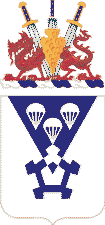
The 503rd Infantry Regiment, formerly the 503rd Parachute Infantry Regiment and the 503rd Airborne Infantry Regiment, is an airborne infantry regiment of the United States Army. The regiment served as an independent regiment in the Pacific War during World War II; at Fort Campbell, Kentucky; in Okinawa, Japan; and in Germany. Regimental elements have been assigned to the 2nd Infantry Division, the 11th Airborne Division, the 24th Infantry Division, 25th Infantry Division, the 82nd Airborne Division, 101st Airborne Division, and the 173rd Airborne Brigade Combat Team. Regimental elements have participated in campaigns in the Vietnam War, Operation Enduring Freedom–Afghanistan, and Operation Iraqi Freedom. The regiment claims 15 Medal of Honor recipients: two from World War II, ten from Vietnam, and three from Afghanistan. A parent regiment under the U.S. Army Regimental System. The regiment's 1st and 2nd Battalions are active, assigned to the 173rd Airborne Brigade, based at Caserma Ederle, Vicenza, Italy. The 3rd and 4th Battalions as well as Companies E, F, G, H, and I have been inactived.

The 325th Infantry Regiment is an infantry regiment of the 82nd Airborne Division. The regiment serves as the 82nd Airborne's light infantry parachute insertion fighting force of the United States Army, with a long and distinguished history, having taken part in World War I, World War II, the Vietnam War, the invasions of Grenada and Panama, as well as the Gulf and Iraq Wars. The subordinate units of the regiment constitute the bulk of the infantry elements assigned to the 2nd Infantry Brigade Combat Team, 82nd Airborne Division.

The 505th Infantry Regiment, formerly and colloquially the 505th Parachute Infantry Regiment and the 505th Airborne Infantry Regiment, is an airborne infantry regiment of the United States Army, one of four infantry regiments of the 82nd Airborne Division of the United States Army, with a long and distinguished history.

The 313th Military Intelligence Battalion was an active duty Airborne Military Intelligence Battalion of the United States Army.

The 317th Infantry Regiment was a regiment of the United States Army during World War II. It was one of three infantry regiments in the 80th Infantry Division. Today, it is known as the 317th Regiment and is based in Lynchburg, Virginia as a training unit within the United States Army Reserve - currently under the 104th Training Division.
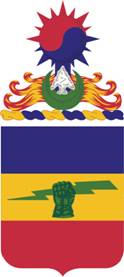
The 73rd Cavalry Regiment is a Cavalry Regiment in the United States Army, first formed in 1941. Three squadrons of the 73rd Cavalry Regiment provided reconnaissance, surveillance, and target acquisition (RSTA) to the Brigade Combat Teams of the 82nd Airborne Division through July 2024 when the last of the three squadrons was deactivated. 3rd Squadron was assigned to 1st Brigade, 1st Squadron was assigned to 2nd Brigade, 5th Squadron was assigned to 3rd Brigade, and 4th Squadron was assigned to 4th Brigade.
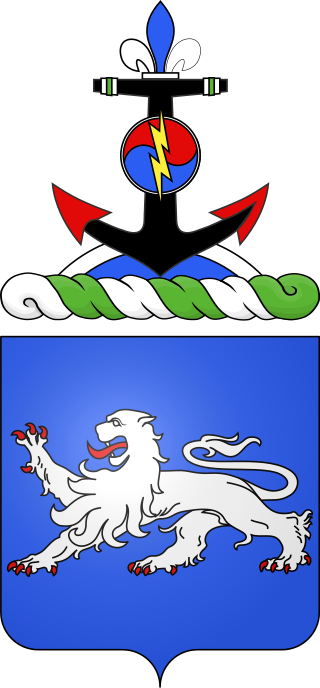
The 68th Armor Regiment is an armored regiment of the United States Army. It was first activated in 1933 in the Regular Army as the 68th Infantry Regiment.

The 37th Engineer Battalion was an airborne engineer battalion in the United States Army, subordinate to the 2d Brigade Combat Team, 82d Airborne Division, based at Fort Liberty, North Carolina. The 37th Engineer Battalion was reactivated in the 82d Airborne Division as part of the United States Army new BCT 2020 concept in which each BCT's Special Troops Battalions would be inactivated and reactivated as Brigade Engineer Battalions. Prior to this, the battalion was a subordinate unit of the 20th Engineer Brigade assigned to XVIII Airborne Corps.

The 2nd Battalion, 503rd Infantry Regiment is an active duty airborne infantry battalion in the United States Army, assigned to the 173rd Airborne Brigade Combat Team and stationed at Caserma Del Din, Vicenza, Italy. The battalion has served with the 2nd Infantry Division, the 11th Airborne Division, the 24th Infantry Division, The 25th Infantry Division, the 82nd Airborne Division, the 101st Airborne Division, and the 173rd Airborne Brigade; has been stationed in Korea, Germany, Italy and the United States; and earned campaign credits in World War II, the Vietnam War, Operation Enduring Freedom—Afghanistan, and Operation Iraqi Freedom.
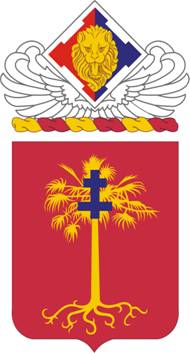
The 320th Field Artillery Regiment is a field artillery regiment of the United States Army. A parent regiment under the U.S. Army Regimental System, the 320th FAR currently has two active elements in the 101st Airborne Division : 1st Battalion, 320th FAR "Top Guns" in 2nd Brigade Combat Team; and 3rd Battalion, 320th FAR "Red Knight Rakkasans" in 3rd Brigade Combat Team. The regiment served with the 82nd Airborne Division during World Wars I and II, and regimental elements have served with the 82nd and 101st Airborne Division, the 193rd Infantry Brigade and the Berlin Brigade, and conducted combat operations in the Dominican Republic, Vietnam, Grenada, Operations Desert Shield and Storm, and the Global War on Terror.
The 82nd Airborne Division Artillery (DIVARTY) is the divisional artillery command for the 82nd Airborne Division of the United States Army, stationed at Fort Liberty, North Carolina. It was organized in 1917, during World War I, was inactivated in 2006 as part of the transformation to modular brigade combat teams, and was reactivated in 2014.

The 525th Expeditionary Military Intelligence Brigade (Expeditionary) is a unit of the United States Army specializing in the acquisition and analysis of information with potential military value. On 28 October 2014, the unit was reflagged from the "525th Battlefield Surveillance Brigade" to an expeditionary military intelligence brigade, the first of its kind.
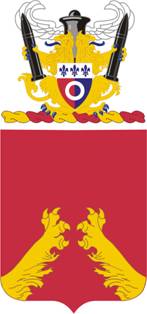
The 3rd Battalion, 321st Field Artillery Regiment is an artillery battalion, assigned to the 18th Field Artillery Brigade, part of the US Army XVIII Airborne Corps at Fort Liberty, NC. The battalion has served in World War I, World War II, Vietnam, and the Global War on Terror. The battalion is equipped with M142 HIMARS rocket launchers.

The 3rd Battalion, 320th Field Artillery Regiment is a Field Artillery Branch battalion assigned to the 3rd Brigade Combat Team, 101st Airborne Division. The battalion has been assigned to the 82nd Airborne Division, 11th Airborne Division and 101st Airborne Division. The battalion has participated in World War I, World War II, Operation Desert Storm, Operation Enduring Freedom, and Operation Iraqi Freedom.

The 4th Battalion, 320th Field Artillery Regiment is an inactive field artillery battalion of the United States Army. The battalion has been assigned to the 82nd Airborne Division, 11th Airborne Division and 101st Airborne Division. The battalion has participated in World War I, World War II, Operation Just Cause, Operation Iraqi Freedom, and Operation Enduring Freedom. The battalion inactivated in 2014 as part of ongoing force reductions.

The 326th Infantry Regiment was an infantry regiment of the United States Army that saw active service during World War I, as part of the 82nd Division and fought in the Meuse-Argonne Offensive and was inactivated in 1919. The regiment was reactivated during World War II, again as part of the 82nd Infantry Division, and was converted into a glider infantry formation, becoming the 326th Glider Infantry Regiment. Originally part of the 82nd Airborne Division, the regiment transferred to the 13th Airborne Division. However, despite training for almost three years, the 326th was never involved in any combat.
The 2nd Battalion, 2nd Field Artillery Regiment is the United States Army’s Direct Support field artillery battalion; assigned to the 428th Field Artillery Brigade and stationed at Fort Sill, OK. Founded in 1775 as the Second Artillery Regiment, the Battalion now carries the lineage of the 18th Battery, Artillery Corps, and carries campaign credit for the Philippine Insurrection, World War I, and World War II.
References
- ↑ Dowling, Timothy C. (2006). Personal Perspectives: World War I. ABC-CLIO. p. 15. ISBN 1851095659.
- ↑ U.S. Army Lineage Series. Infantry. pg. 827.
- ↑ 522nd Infantry Battalion Yearbook, 1954. Fort Sill, Oklahoma.